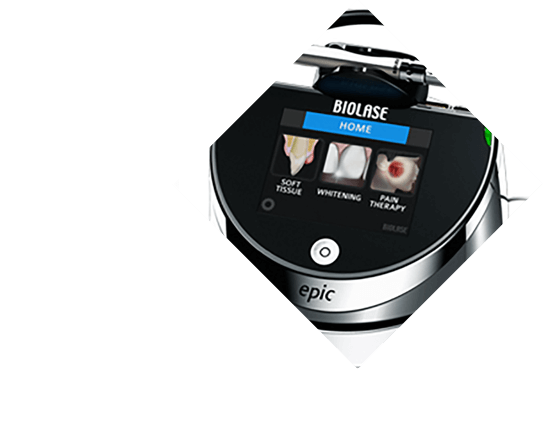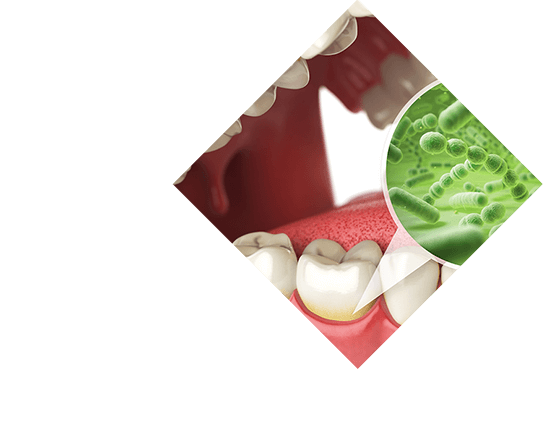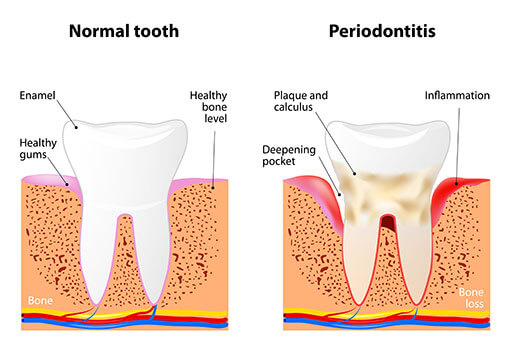



Common signs of periodontal disease include swollen, red or sore gums, bleeding, loose teeth, chronic bad breath, receding gums and exposed root surfaces. However, sometimes, patients have no symptoms at all until the later stages of the disease. That’s why we perform a periodontal evaluation during your dental exam. If you have any of the aforementioned symptoms or your gum pockets, which are the spaces that form between your teeth and gums when you have periodontal disease, are deeper than four millimeters, a regular cleaning won’t be effective, so a deep cleaning is indicated.
Deep cleaning is technically known as scaling and root planing. Since the pockets harbor toxic bacteria from plaque, we remove the buildup above and below the gum line all the way to the bottom of the pocket. We then smooth the tooth’s root and use a laser to encourage the gums to reattach. If necessary, we can also prevent infection with antibiotics or antimicrobial cream.


Scaling, or subgingival cleaning, is where we get rid of the calculus and bacteria under the gum line and in the gum pockets.
Any lingering bacteria is addressed with root planing. We smooth and shape the surface of the roots. This also helps with the reattachment of the gums.
After scaling and root planing, we can place an antibacterial or antibiotic cream in the gum pockets to nix infection and decrease discomfort. We finish the process by using a laser to eliminate remaining bacteria from the gum pockets and stabilize the healing by accelerating new gum attachment growth back on the roots of the teeth. This prevents any further bacteria from recolonizing the pockets.


